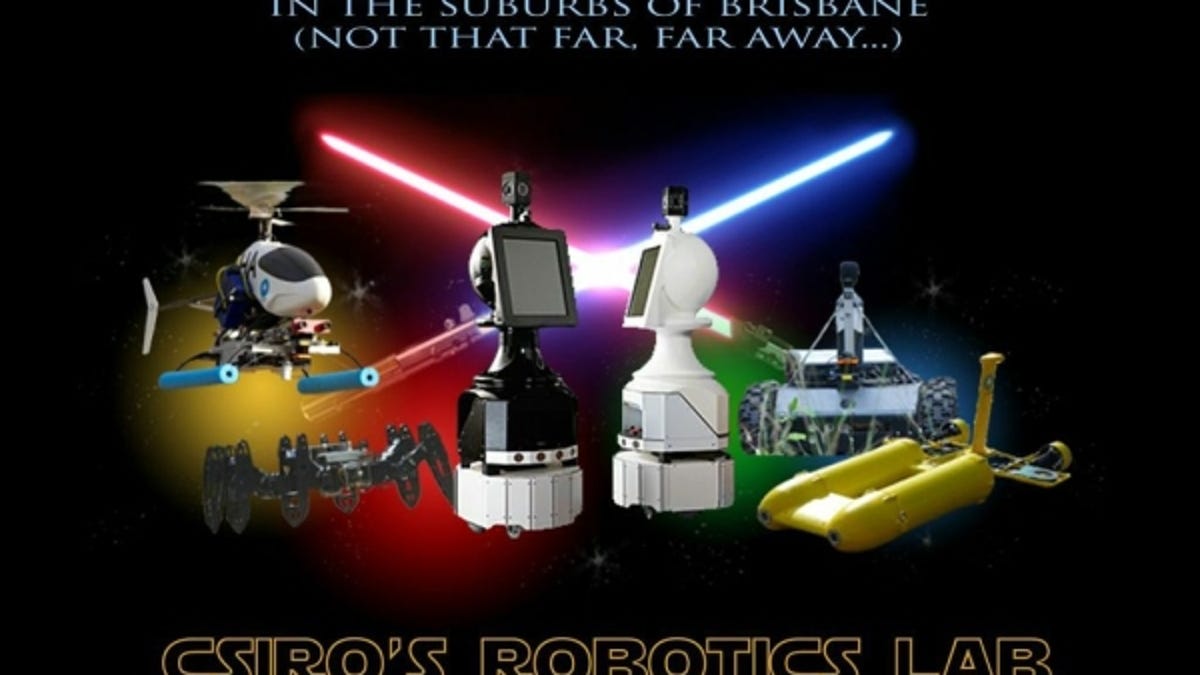May the Fourth be with you, from CSIRO Robotics
In honour of International Star Wars Day, the CSIRO is launching its next generation of robots.

(Credit: CSIRO)
In honour of International Star Wars Day, the CSIRO is launching its next generation of robots.
It's been 35 years since R2-D2 and C-3PO first hit the big screen from a galaxy far, far away — and although here on Earth our robots don't have quite their level of autonomous thought and behaviour, the CSIRO believes that its latest generation of assistive robots have a lot in common with their on-screen brothers, in spite of their differences.
"Robots on Earth today tend to be made for very specific tasks and are not particularly easy to train to perform activities outside their intended scope," said Dr Jonathan Roberts, robotics expert and Ddirector of CSIRO's Autonomous Systems Lab, who decided he wanted to get into robotics after seeing Star Wars at 10 years of age. "However, we are currently developing robotic systems which are designed to assist people in a variety of circumstances. While some may work alongside people in a factory others are designed for tasks considered impractical or too hazardous for humans. This is exactly what droids do in the Star Wars universe, except, of course, droids help all types of weird creatures, not just people."
And, just as R2-D2 was built for starship maintenance and C-3PO as a sort of robot butler, the CSIRO is working on building robots to aid humans in all aspects of life — if not quite sdo flexible in their purposes.
The telepresence robots are to be stationed at great Australian landmarks, buildings and museums, including the Great Barrier Reef, allowing anyone with an internet connection to experience the wonders our country has to offer.
A stealth robot will help scientists study our animals, tracking them through their natural habitats. Acoustics will help the robots monitor their surroundings to remain undetected and leave the habitats unspoiled, unlike the disruptive presence of humans.
The "starbug" and helicopter robots will monitor the seas and buildings, respectively, reaching where humans cannot — the former to collect marine data for ecosystem surveys, the latter to inspect dangerous or hard-to-reach infrastructure.
Finally, the hexapodrobot will be used for monitoring and mapping uneven terrain where wheeled robots have difficulty. Equipped with 18 servo motors, it will be able to provide sensory feedback to its software, providing study data about how the robot interacts with the terrain over which it crawls.
Star Wars fans can give their feedback by tweeting their favourite of the new robots to @CSIRONews using the hashtag #maythefourthbewithyou.

